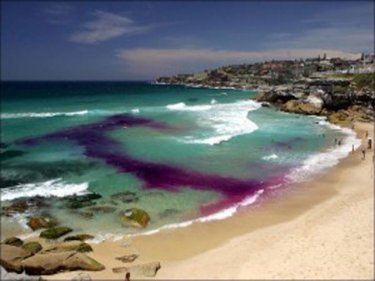Associate Professor Dr Rob Brander of the School of Biological, Earth and Environmental Sciences at Sydney's University of New South Wales aims to let a harmless dye color a rip in the sea off Karon beach on Thursday.
Professor Brander - better known as Dr Rip - is a coastal scientist who specialises in rip currents. He has spent 20 years measuring rips and also educating people about them.
''I guess I am an international expert in this regard (there's not a lot of us!),'' he said in an email to Phuketwan.
Dr Brander will be working with the Phuket Lifeguard Club over three days to learn as much about rip currents along Phuket beaches as he can.
''I understand that a significant number of drownings occur, but most people are unaware of what the rips are (tourists at least),'' he wrote.
Phuket's lifeguards say that once tourists reach the beaches determined to swim, no amount of red flags or whistle-blowing will dissuade a large proportion of the swimmers from taking to the water.
They recommend three-stages of warnings being delivered - first as tourists arrive at Phuket International Airport, secondly in person by receptionists as tourists check in at all Phuket resorts, and finally in signage and through the red-flag no-swim system at the beaches.
Dr Brander's Phuket research is likely to help lifeguards to identify the most dangerous spots on beaches and to develop a system to track the rips, which can move as conditions alter.
The simplest advice to save lives is for people to avoid the beaches entirely if red flags are flying and to only swim between the lifeguards' red and yellow flags on days when swimming is regarded as safe.
The YouTube video that explains how to identify a rip has had more than 1.2 million views so far.
How to Survive Beach Rip Currents
http://www.youtube.com/watch?v=-hCZuYzNujI










They key point to rips is they are not static, they can form suddenly. I remember as a teenager in Perth it was almost a daily event at Trigg or Scarborough to have dozens of people caught in the same rip.
You can see them forming as the sand is churned and the water color changes. Once caught in a rip you have only two options. You either let it take you out and make your way back in after it moves on, or you swim across it, both require a powerful swimmer.
The inexperienced swimmer nearly always tries to fight directly against the current leading to fatigue, panic and often drowning. Beaches like Surin are very dangerous in the monsoon season due to the steep slope. You can be in knee deep water and take one more step and be in over your head.
Surfers of course love rips as it is an easier paddle out into the surf.
Posted by Arun Muruga on June 23, 2014 13:02